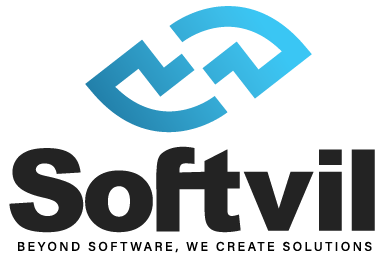- Introduction
- The Importance of Streamlined Code Reviews
- Facilitating Collaborative Excellence and Knowledge Sharing
- The 6-Step Checklist for Effective Code Reviews: Elevating Software Quality and Collaboration
- Collaboration and Communication: Catalysts for Effective Code Reviews
- Tools for Streamlining Code Reviews: Boosting Efficiency with Modern Solutions
- Conclusion
Introduction
Code reviews emerge as a pivotal practice for maintaining top-tier quality. For software companies in Sri Lanka, as well as globally, these reviews play a crucial role in refining software solutions to meet and exceed industry standards. A meticulously structured code review process stands as a cornerstone in this pursuit. Beyond identifying errors and discrepancies, it bolsters code readability, ensuring that the codebase is not only functional but also comprehensible and maintainable. Moreover, this practice serves as an early warning system for security vulnerabilities and performance bottlenecks, enhancing the overall reliability of the software.
Code reviews offer an avenue for knowledge exchange among developers, cultivating a culture of collaborative excellence. In Sri Lanka’s software landscape, embracing this practice translates to delivering robust applications that cater to user needs and expectations. This article introduces a streamlined 6-step code review checklist, aimed at optimizing the review process while upholding the highest standards of software craftsmanship. By implementing this approach, software companies in Sri Lanka can fortify their development processes and contribute to the creation of software solutions that stand the test of time.
The Importance of Streamlined Code Reviews

Efficient code reviews stand as a linchpin in the software development landscape, offering a dual benefit of bolstering code quality while expediting development cycles. Within this realm, two crucial aspects emerge:
Enhancing Code Quality for Robust Software
Efficient code reviews function as a gatekeeper for software quality. By meticulously scrutinizing code, reviews unearth lurking errors, inconsistencies, and suboptimal practices. This meticulous examination serves as a crucible for code refinement, resulting in improved reliability and durability of the software.
Identification of Defects: Code reviews are adept at spotting coding errors, logic flaws, and potential vulnerabilities before they permeate into the final product.
Quality Enhancement: Constructive feedback from reviews aids in code optimization, leading to cleaner, more maintainable codebases.
Early Bug Detection: Swift identification of bugs ensures timely rectification, preventing issues from cascading into later stages of development.
Facilitating Collaborative Excellence and Knowledge Sharing

Streamlined code reviews transcend error detection, fostering a climate of collaboration and knowledge exchange among development teams.
Team Collaboration: Code reviews create avenues for developers to share insights, collaborate on solutions, and collectively elevate the software.
Cross-Pollination of Ideas: Varied perspectives from reviewers lead to innovative solutions and improved coding practices.
Learning Platform: Reviews become a breeding ground for knowledge transfer, especially for junior developers learning from their peers.
The 6-Step Checklist for Effective Code Reviews: Elevating Software Quality and Collaboration

Code reviews are a cornerstone of software quality assurance, offering a systematic approach to identify and rectify issues within codebases. To harness their full potential, adopting a well-structured checklist can significantly enhance the effectiveness of the review process. This 6-step checklist encapsulates crucial aspects to consider during code reviews, ensuring both code quality and team collaboration are optimally addressed.
Step 1: Preparing for the Review
Preparation sets the foundation for a fruitful code review. Before initiating the review process, developers must ensure that the code is ready for evaluation. This involves thorough documentation of changes, outlining the context, and setting clear expectations. Moreover, selecting appropriate reviewers is pivotal for diverse perspectives. A mix of experience levels can provide comprehensive insights, enriching the review process.
Step 2: Code Clarity and Readability
Clear and readable code is paramount for maintainability and team collaboration. Code should be akin to a well-structured narrative, allowing developers to understand its functionality swiftly. During reviews, clarity is assessed through meaningful variable names, concise comments, and consistent coding conventions. Practical tips include avoiding cryptic abbreviations, adhering to a consistent indentation style, and utilizing explanatory comments for complex sections.
Step 3: Logic and Functionality
The heart of any code review lies in evaluating the logic and functionality of the code. Reviewers must ascertain that the code aligns with the intended requirements and specifications. This step involves scrutinizing algorithms, decision-making processes, and data flow. An effective technique is to trace the code’s execution mentally, identifying potential logical fallacies or unintended consequences.
Step 4: Code Performance and Efficiency
Efficient code not only ensures optimal software performance but also reduces resource wastage. During the review, assess the code for potential bottlenecks, redundant computations, or inefficient data structures. Discuss potential enhancements to expedite execution time and minimize resource consumption. This step is particularly crucial for applications where responsiveness and scalability are paramount.
Step 5: Security and Error Handling
Security vulnerabilities and error handling are critical dimensions of software quality. Reviewers must diligently identify potential security breaches, such as SQL injection or Cross-Site Scripting (XSS) vulnerabilities. Additionally, scrutinize error handling mechanisms to ensure graceful degradation and effective error reporting. This step is crucial for safeguarding the software against malicious attacks and minimizing unexpected failures.
Step 6: Compliance with Coding Standards
Adhering to coding standards ensures consistency and maintainability across the codebase. During the review, cross-reference the code against established coding guidelines. This encompasses indentation conventions, naming conventions, and other project-specific standards. Consistent code formatting not only enhances readability but also reflects a professional approach to software development.
The culmination of these six steps in the code review process augments not only the quality of the codebase but also the collaborative dynamics within the development team. Each step holds a distinct purpose in refining the code and aligning it with industry best practices. As reviewers engage in comprehensive evaluations, the exchange of insights cultivates a learning environment that enriches the collective skill set.
Collaboration and Communication: Catalysts for Effective Code Reviews
In the realm of code reviews, the synergy between effective communication and collaboration plays a pivotal role. This section underscores how these elements amplify the review process, fostering a culture of growth and excellence.
Effective Communication’s Impact
Effective communication between reviewers and developers transforms code reviews into platforms for shared learning. Constructive feedback exchange guides developers, while open discussions clarify ambiguities and expedite issue resolution.

Cultivating a Positive Atmosphere
A positive atmosphere nurtures productive code reviews. Encouraging respectful critique, acknowledging developer efforts, and fostering openness to ideas create an environment of teamwork and mutual respect.
Fostering Productive Discussions
Productive discussions are the bedrock of effective reviews. Thoughtful questions from reviewers trigger deeper analysis, while developers explaining their choices enrich the process. Healthy debates stimulate innovative solutions.
In essence, collaboration and communication elevate code reviews beyond error detection. By nurturing open dialogue and a positive ethos, teams amplify the value of these reviews, turning them into engines of innovation, skill refinement, and team unity. This integration refines not only the code but also the collective prowess that propels the development team forward.
Tools for Streamlining Code Reviews: Boosting Efficiency with Modern Solutions

Introducing contemporary tools for efficient code reviews is pivotal in optimizing the development process. These tools streamline the review cycle, enhancing collaboration and productivity. Noteworthy features include real-time commenting, code highlighting, and integration with version control systems, which expedite feedback. Automated code analysis tools pinpoint issues, ensuring adherence to coding standards and identifying potential vulnerabilities. By incorporating these tools, teams can fortify code quality, expedite review iterations, and promote a seamless workflow that aligns with agile development practices.
Conclusion
Within Sri Lanka’s software sector, the concept of continuous improvement takes center stage, driven by vital feedback loops. The 6-step checklist emerges as a cornerstone, encapsulating the essence of effective code reviews to enhance both software quality and collaborative synergy among software companies in Sri Lanka.
This comprehensive checklist, spotlighting key factors like preparation, clarity, logic, performance, security, and standards, serves as a strategic blueprint for refining review processes. By seamlessly integrating it into workflows, software companies in Sri Lanka can adeptly navigate the development landscape, reaping benefits that stretch beyond mere error identification. For Sri Lanka’s tech domain, this approach carries the potential to transform practices. It translates into heightened code quality, streamlined development cycles, and a deeper commitment to coding norms. As feedback loops tighten, the insights gained from one review fuel improvements in the next—a continuous journey of advancement.
In summary, software companies in Sri Lanka have a prime opportunity to elevate their practices through systematic code reviews. By weaving the 6-step checklist into operations and fostering a culture of collaborative growth, these companies can steer a course toward excellence. The directive is resounding: adopt the checklist, advocate impactful reviews, and embark on an unwavering journey toward amplified software quality and united collaboration.

